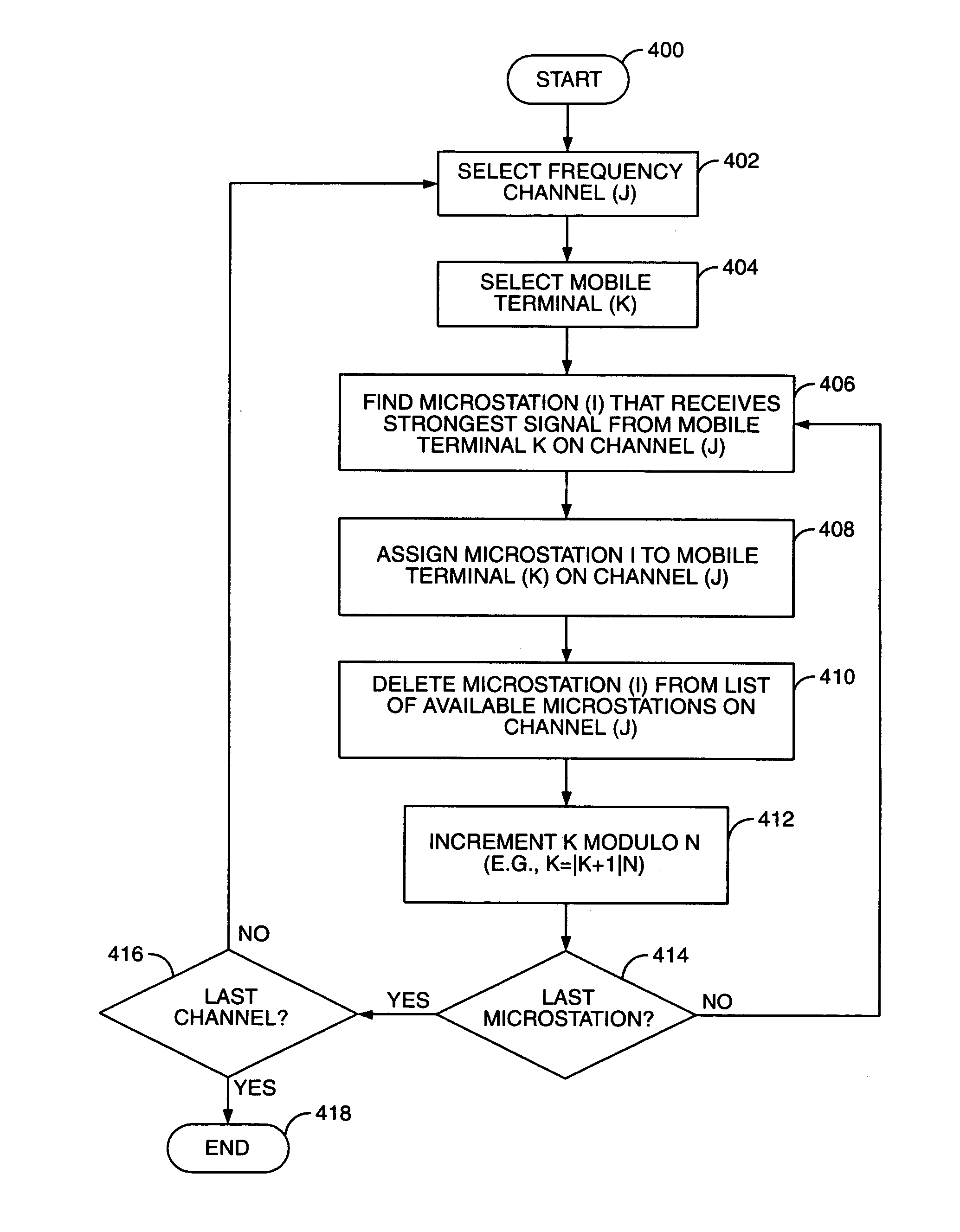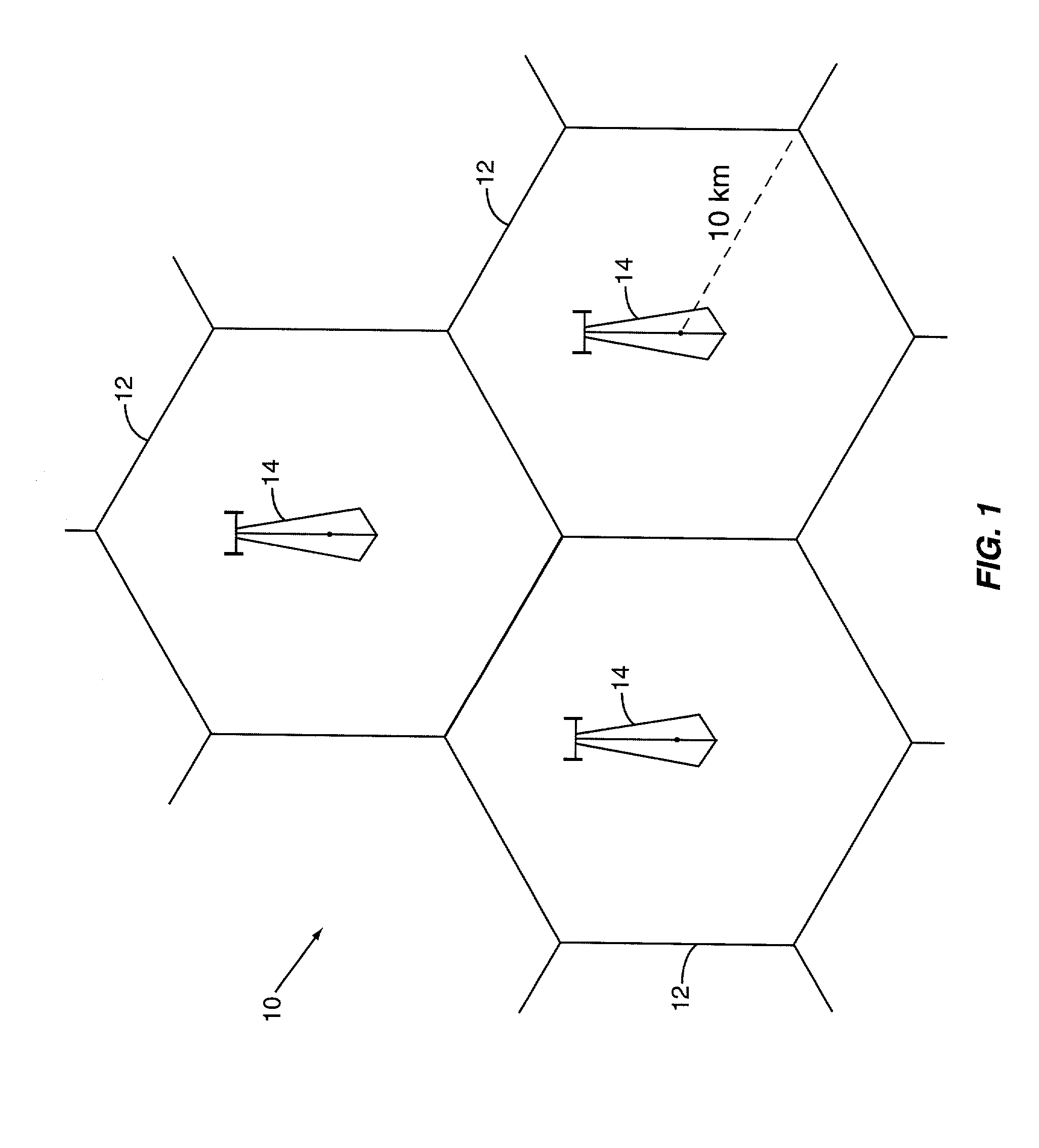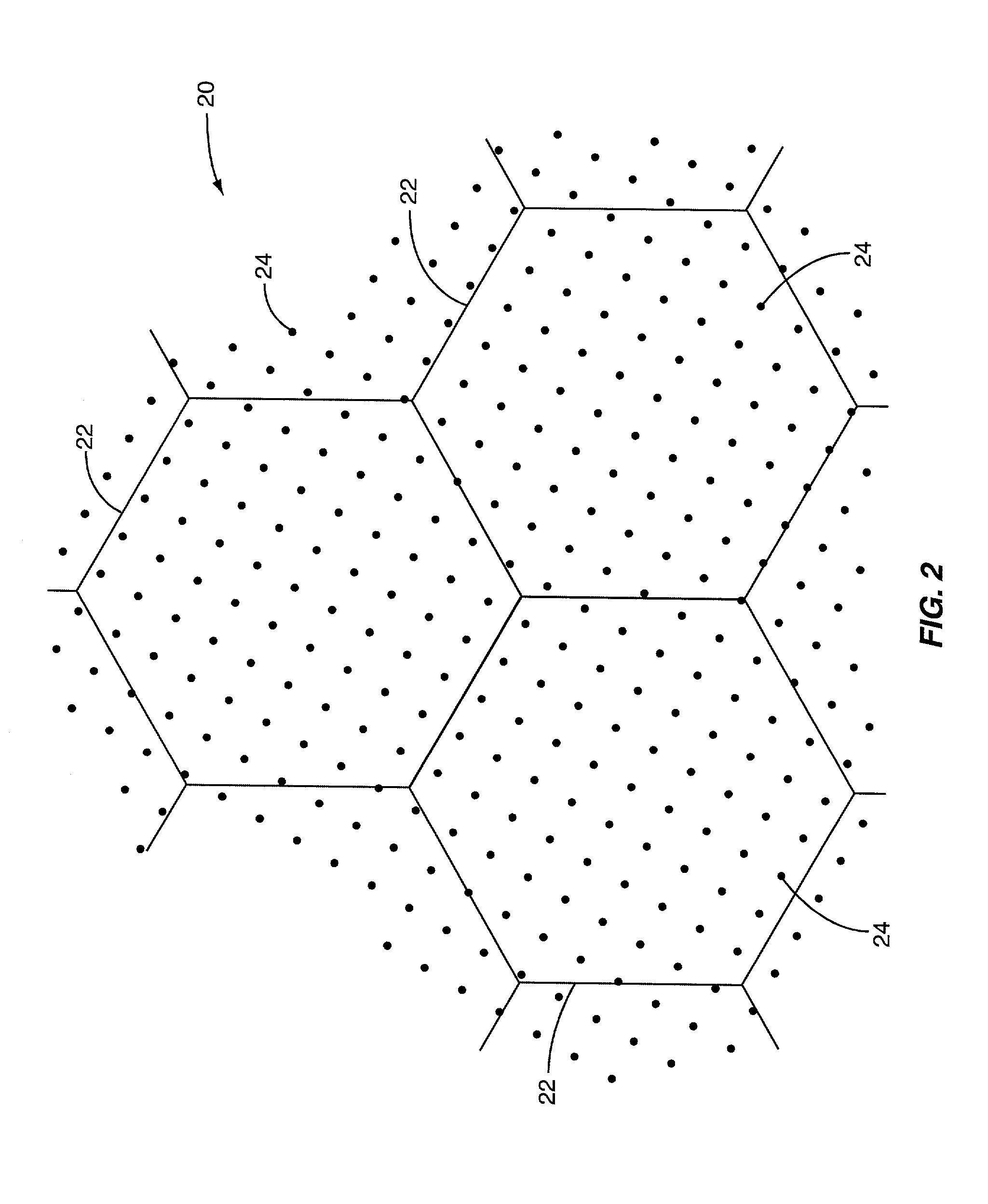Distributed wireless architecture using microcast
a wireless architecture and microcast technology, applied in the field of new architecture for cellular communication systems, can solve the problems of slow spillover of interference into neighboring cells, the power of any interfering signal diminishes with increasing distance between interfering users, etc., and achieves advantageous decoding and improved performance.
- Summary
- Abstract
- Description
- Claims
- Application Information
AI Technical Summary
Benefits of technology
Problems solved by technology
Method used
Image
Examples
Embodiment Construction
[0025]Referring now to the drawings, FIG. 1 illustrates a conventional macro-cellular communication system indicated generally by the numeral 10. The cellular communication system 10 comprises a plurality of relatively large cells 12 approximately 20 km in diameter. A centrally located base station 14 serves each cell 12. Signals transmitted by the base station 14 propagate from the base station 14 to the perimeter of the cell in all directions. The power of the signal transmitted from the base station 14 at any given point steadily diminishes as a function of the distance from the base station 14. In a vacuum, the signal strength varies inversely in proportion to the square of the distance from the base station 14. In practice, path loss in a cellular communication system is more severe than the inverse square law would predict due to terrain, atmospheric conditions, and other real-world effects. In general, it is normally assumed that the signal power at any given point varies inv...
PUM
 Login to View More
Login to View More Abstract
Description
Claims
Application Information
 Login to View More
Login to View More - R&D
- Intellectual Property
- Life Sciences
- Materials
- Tech Scout
- Unparalleled Data Quality
- Higher Quality Content
- 60% Fewer Hallucinations
Browse by: Latest US Patents, China's latest patents, Technical Efficacy Thesaurus, Application Domain, Technology Topic, Popular Technical Reports.
© 2025 PatSnap. All rights reserved.Legal|Privacy policy|Modern Slavery Act Transparency Statement|Sitemap|About US| Contact US: help@patsnap.com



